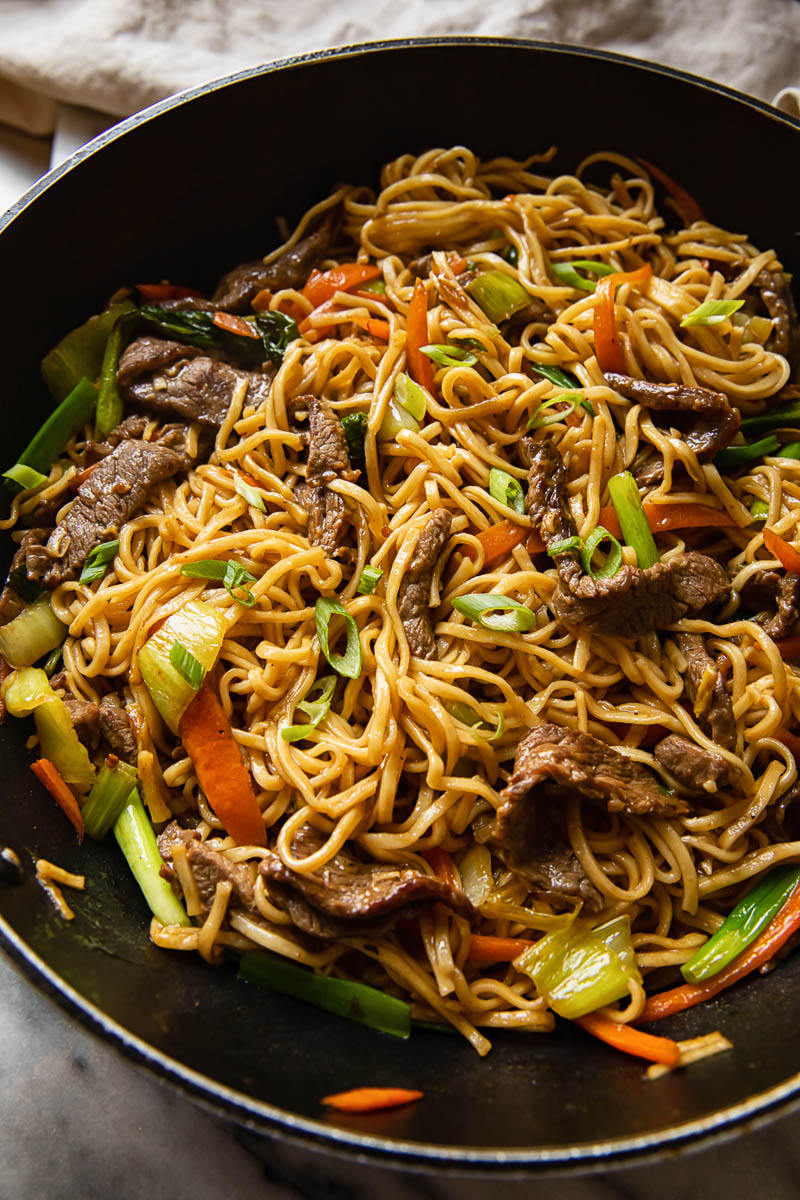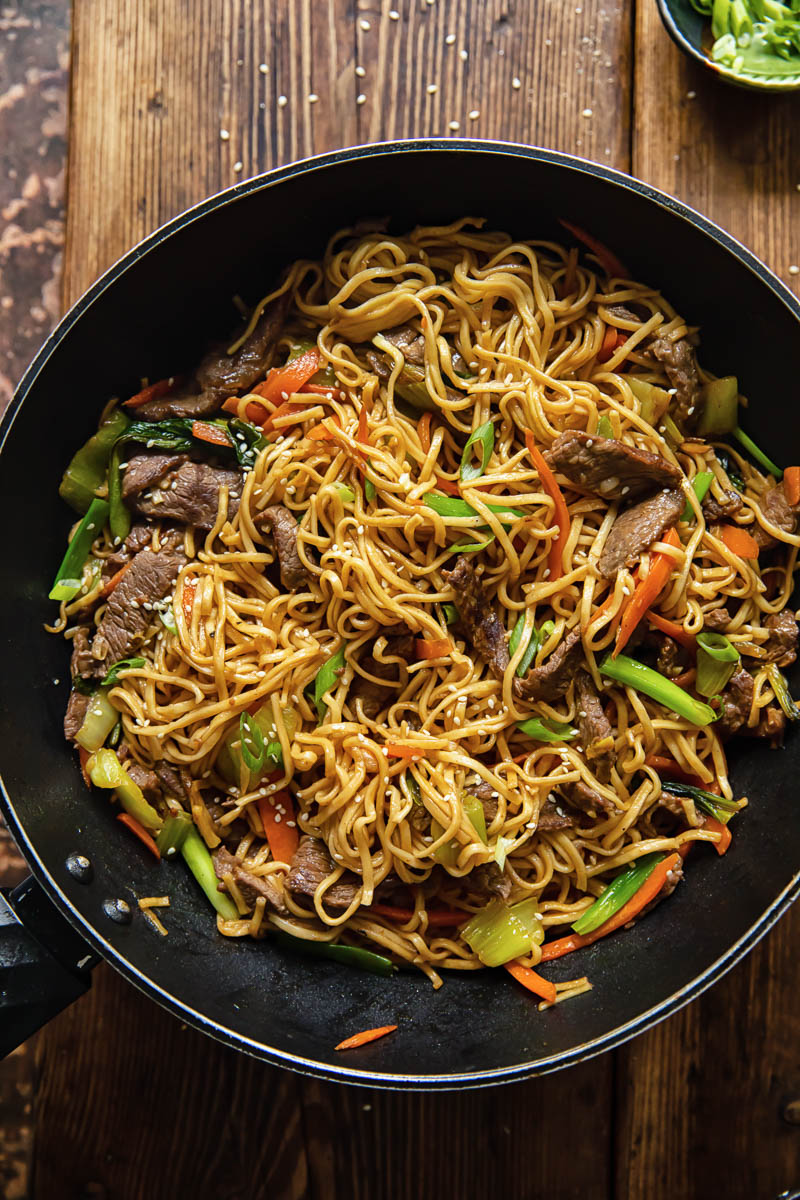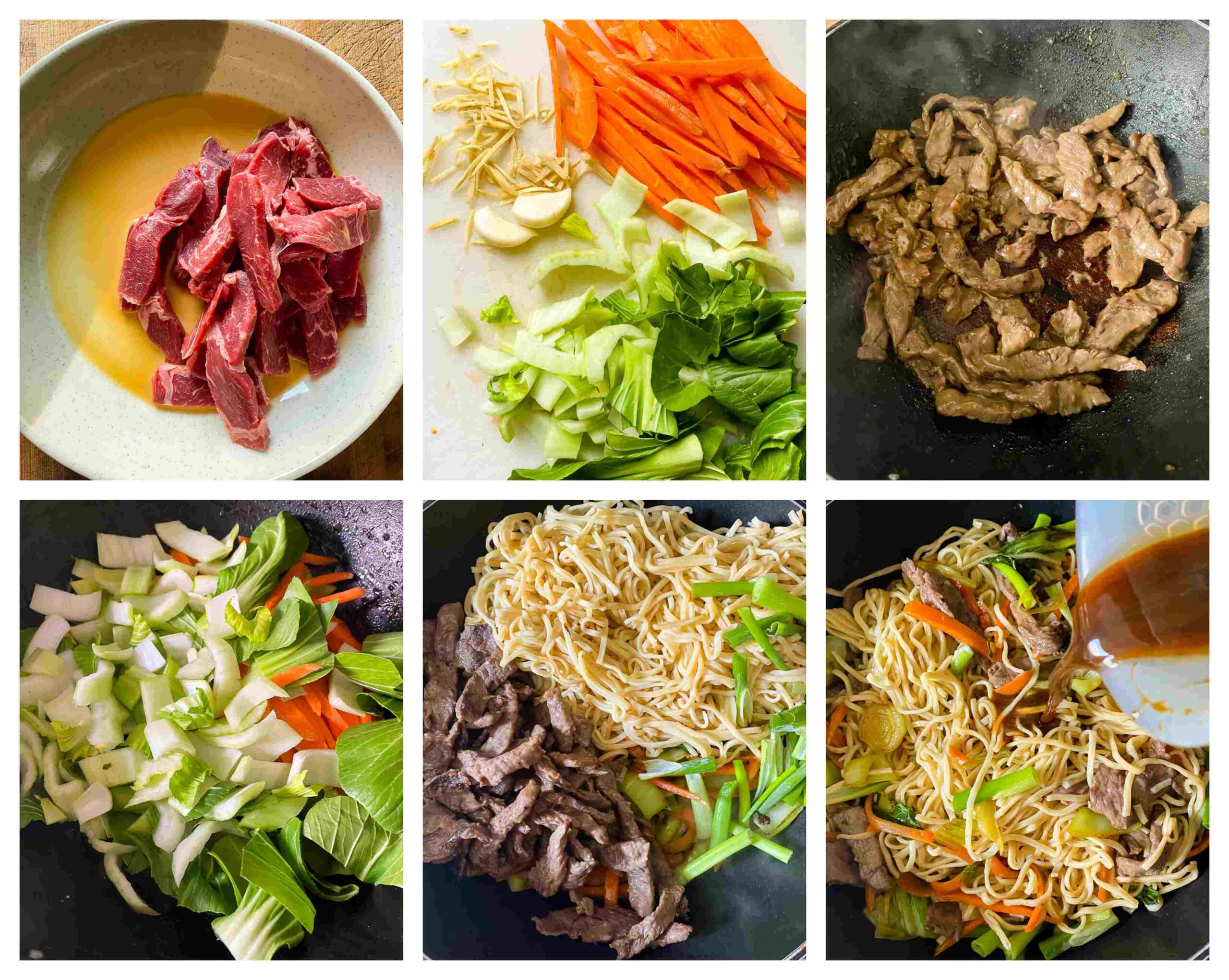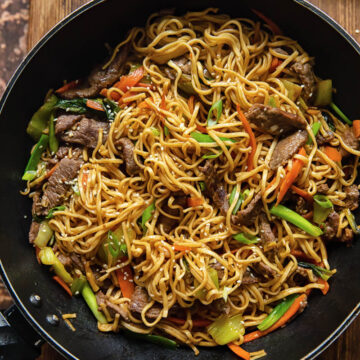If you are looking for an easy starter for this meal, take a look at our Salt and Pepper Shrimp. I used to be intimidated by cooking Asian food at home. After all I didn’t grow up with this food! However, after spending some time in Asia, where I watched people cook, I realised it’s not as hard! Practice makes perfect as they say. But what is also helpful is understanding the cooking technique, which delivers perfect results. One of the main differences between European and Asian style of cooking is the application of heat. Noodle dishes and stir fries demand very high heat. The vegetables and meat are sliced thinly and cooked quickly. So when we take a bite we can still taste the firmness of the vegetables. So delicious!
Chow Mein Noodles
Chow Mein literally mean “fried noodles”. This doesn’t mean you need to add a lot of oil but it does mean you need to turn up your heat! I would avoid doubling this recipe. It’s very difficult to achieve the same results in an overcrowded pan. Apart from noodles chow mein is usually made with a variety of vegetables, and flavoured with a little bit of meat. You can use chicken, pork or beef like I did. If you are in the mood for something lighter, take a look at my Easy Shrimp Chow Mein.
What Vegetables to Use
Any veg you love can be used in this recipe. I would start with the ones that cook quickly like bok choy, cabbage, snow peas, red and yellow peppers or thinly sliced carrots. But it doesn’t mean you can’t use broccoli or cauliflower. Just make sure you blanch them first. The easiest thing to do is to cook them in the same pot with your noodles. They only need about 4 minutes to soften.
The Sauce
It’s no secret that the sauce is what makes the dish what it is. It gives the noodles and vegetables the flavour we associate with chow mein. Good news is all ingredients for the sauce are easy to find in your local supermarkets. Chances are most of them are already in your fridge or pantry. Oyster sauce, dark soy sauce (richer, more concentrated flavour then regular soy sauce), sugar or honey, white pepper, sesame oil. If you want it to taste really authentic, splurge on Chinese Cooking Wine (Shaoxing Wine or Shaohsing Wine). It will last you ages and it adds something special.
Serving suggestions
Beef chow mein is a whole meal in a pan with a whole variety of nutritious and filling ingredients, so no need to serve anything on the side. Always a win when we can keep things simple! I do like to serve mine with sesame seeds to be sprinkled on top. I also bring extra soy sauce and sriracha to the table just in case anyone wants a bit more of a salty or spicy hit.
Storage and leftovers
You can keep any leftover noodles refrigerated in an airtight container for 3-4 days. Keep it simple and reheat in a microwave. If you’d like to hold on to leftovers a bit longer, they can be frozen for as long as 2-3 months. In both cases, it’s best to refrigerate or freeze leftovers within 2 hours of cooking.
More favourite Asian noodle dishes
Singapore Noodles Easy Dan Dan Noodles Chicken Yaki Udon Filipino Noodles Pancit



